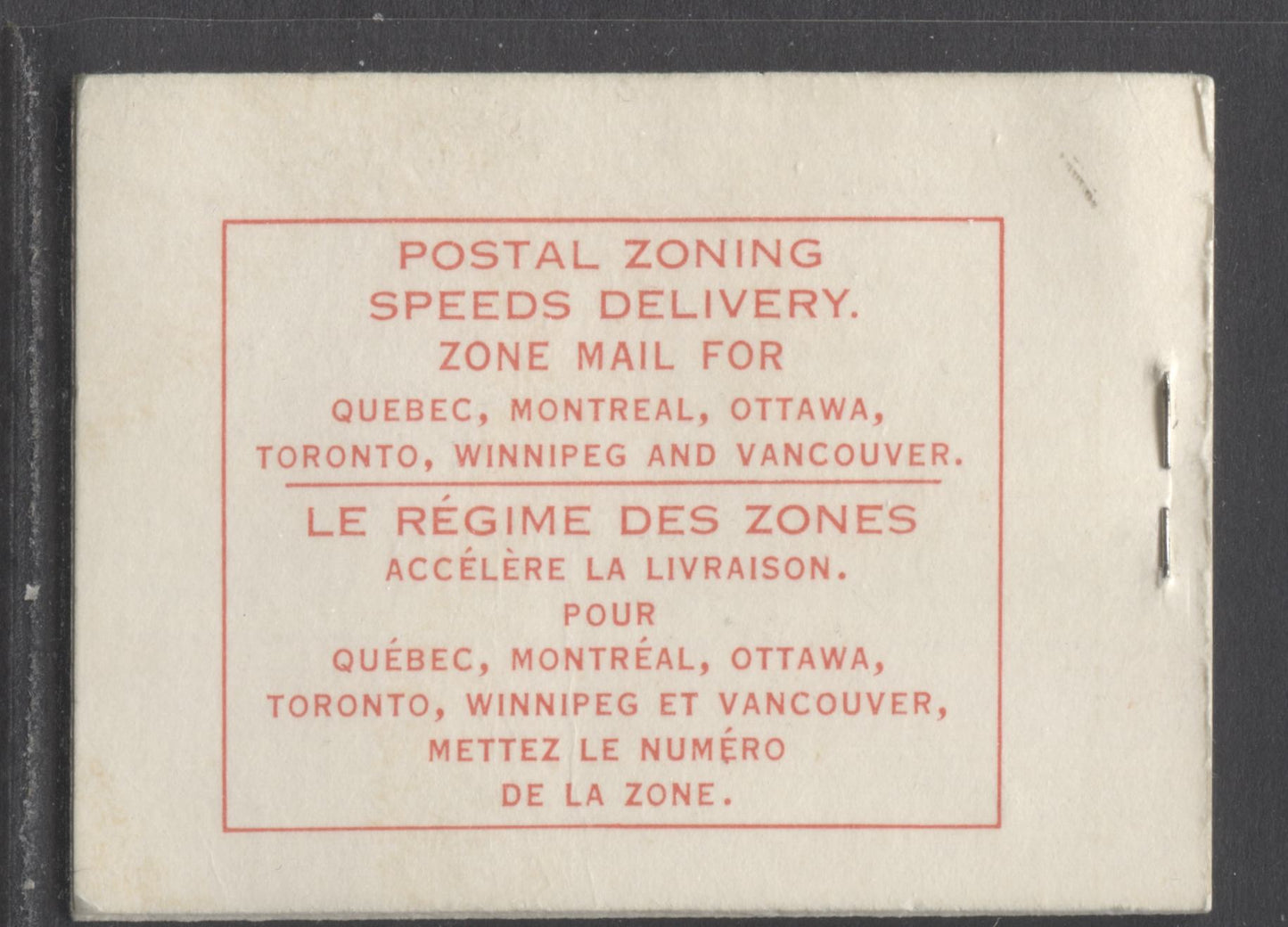Brixton Chrome
Lot 185 Canada #BK53bvar 1962-1967 Cameo Issue, a VFNH Booklet Containing 1c & 4c Panes of 5, Type II 'Local 4c First Ounce' Cover, DF 1c & LF 4c Panes, HB Interleaving
Lot 185 Canada #BK53bvar 1962-1967 Cameo Issue, a VFNH Booklet Containing 1c & 4c Panes of 5, Type II 'Local 4c First Ounce' Cover, DF 1c & LF 4c Panes, HB Interleaving
Couldn't load pickup availability
A VFNH complete booklet containing 1 pane of 5 + label of the 1c light brown and 1 pane of 5 + label of the 4c lighter red, with type II cover. The 1c pane is DF and the 4c pane is LF. The interleaving is hibrite (normally it is DF).
These booklets were issued with five types of covers:
Outer cover design is 62 mm wide, and the inside front cover is rubber stamped with "Local 4c first ounce".
Outer cover design is 62 mm wide, and the inside front cover does not contain the phrase "Give stamps to shut-ins".
Outer cover design is 62 mm wide, and the inside front cover contains the phrase "Give stamps to shut-ins".
Outer cover design is 65 mm wide, and the inside front cover contains the phrase "Give stamps to shut-ins". This is only known on the booklets containing the 5c stamps.
Centennial cover design. This is only known on the booklets containing the 5c stamps.
McCann and Unitrade doesn't list this booklet. The LF pane lists for $20 & the regular booklet catalogues for $9, so we're estimating this unused booklet at $25. The booklet offered here grades 80 as follows:
Cover freshness: 10/10
Centering of the panes: 50/70 (average of both panes)
Condition of cover edges: 5/5
Freshness of the panes: 5/5
Absence of visible cover flaws or stains: 5/5
Condition of interleaving and contents: 5/5
The Cameo issue is the first issue to fully develop Winnipeg tagging, which was introduced at the very end of the Wilding period. There were several trials conducted in the UK to develop the ideal taggant compound, and it is apparent from examining the stamps of this issue that the composition of the taggant either changed during the life of the issue, or several different types of taggant were used. These differences are best seen using short-wave, rather than the more commonly used long-wave ultra violet light. Under short wave light the bands that appear dark yellow will glow a very bright electric blue. The regular tagging that appears of medim darkness will either glow bluish white or will not be visible at all under the short wave lamp. The bright electric blue taqgging has a prolonged after-glow that is visible after the light is switched off, usually 2-4 seconds. In contrast the less visible tagging has either just 1 second of afterglow, or no afterglow at all.
The paper used on the low values and the 15c is a vertical ribbed paper that appears smooth on the front surface and can be either smooth on the back, or horizontal ribbed. The paper used for the booklet and cello-paq printings of the low values, 7c, 8c and $1 is a horizontal wove paper that is smooth on the front, but can appear vertical ribbed on the back or be smooth. The default level of fluorescence is DF for most all stamps of this issue. A low fluorescent paper exists on very few stamps of this issue and it tends to be a light bluish white under long-wave UV. This paper can include very few fluorescent fibres also.
The gum found on this issue is usually either a smooth or streaky semi-gloss cream to yellowish cream gum. However, a gum with a satin sheen can also be found, as well as a gum that has a satin sheen and a grainy surface texture. So far we have only seen this last type of gum on printings of the 4c value from plate 5. However, it may exist on other values.
Perforations are not measured or described on these stamps, as we simply did not have time to measure them. Unitrade lists the standard line perforation as 12, but it can be either 12, 11.85 or 11.95 and combinations of both these measurements, for all stamps in the set.
Share






